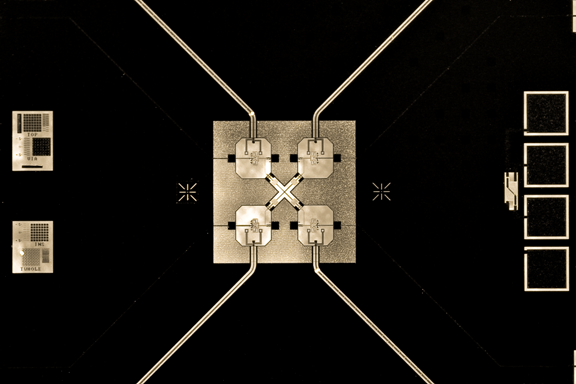
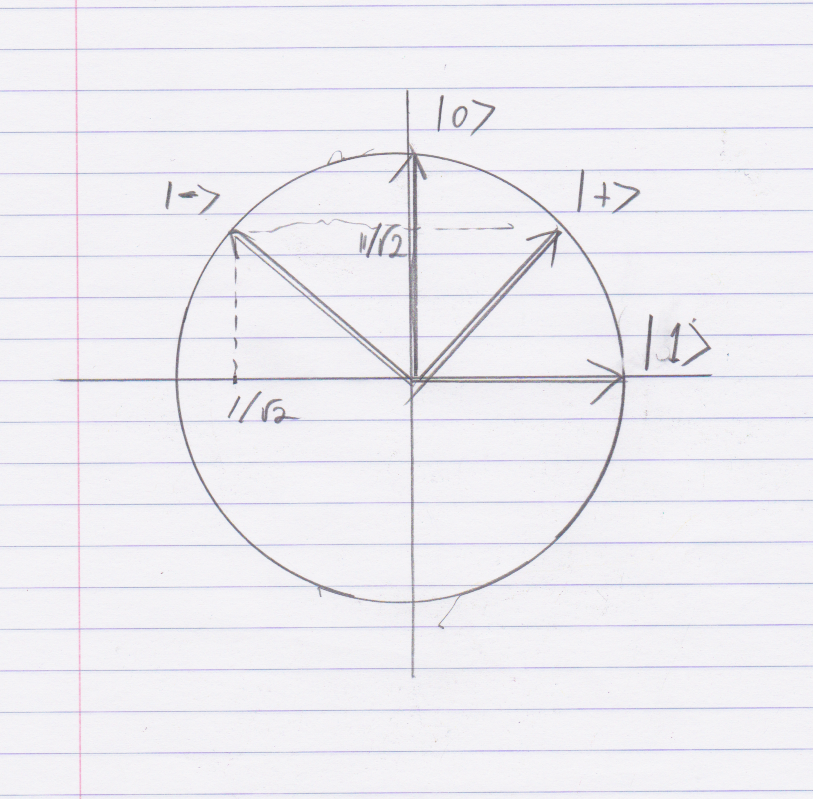
∣+❭ = H(∣0❭) = (1/√2) ( ∣0❭ + ∣1❭ )
∣−❭ = H(∣1❭) = (1/√2) ( ∣0❭ − ∣1❭ )
H(∣0❭) ⊗ H(∣0❭) = (1/√2) ( ∣0❭ + ∣1❭ ) ⊗ (1/√2) ( ∣0❭ + ∣1❭ ) = (1/2) ( ∣00❭ + ∣01❭ + ∣10❭ + ∣11❭ )
A an observation of one qubit or the other will not affect the probabilities in the superposition of the other qubit. As a two quibit quantum system, before an observation of one of the qubits, all for observables are likely with probability 1/4. After an observation of one of the qubits, that qubit will be in a classical, non-superposed state, according to the outcome of the observation. The other qubit will remain in a superposed state, namely ∣+❭.
Not so with the following qubit in the Bell state.
(1/√2) ( ∣00❭ + ∣11❭ )
In this state, the outcome of an observation of one qubit implies a single state for the other qubit. When the observation takes one qubit to a classical, non-superposed state, the other qubit must follow, despite that no direct observation has been made of that qubit.
The two qubits are said to be entangled when an observation of one acts as an observation on the other, due to the form of their superposition.
One wrong model is that entanglement is a compact expression expressing two possible outcomes of and observation, but the system is already in one of those outcomes, the observer is simply uncertain which it is. This is wrong. The entangled state is quantum until the observation collapses the some or all of the quantum superposition to a classical outcome consistent with what was observed.
Another wrong model is that after the observation the entangled particle continues in a superposed state, but its future is determined, and when the observation is made then the particle will collapse to a classical state. This is also wrong. They are soul-mates, connected by quantum telepathy; what happens to one affects the other.
This qiskit run shows the basic operation of the cnot on the input ∣00❭. The control is diagramed as a small dot and does not change the qubit state. Since q0 is ∣0❭ the value of q1 is not changed and remains ∣0❭.
If q1 where in state ∣1❭, it cnot would also not change the state. We do not show this case for q1 as the formation of the Bell state will have q1= ∣0❭.
So far it looks like nothing much is happening. But don't be so sure about that!
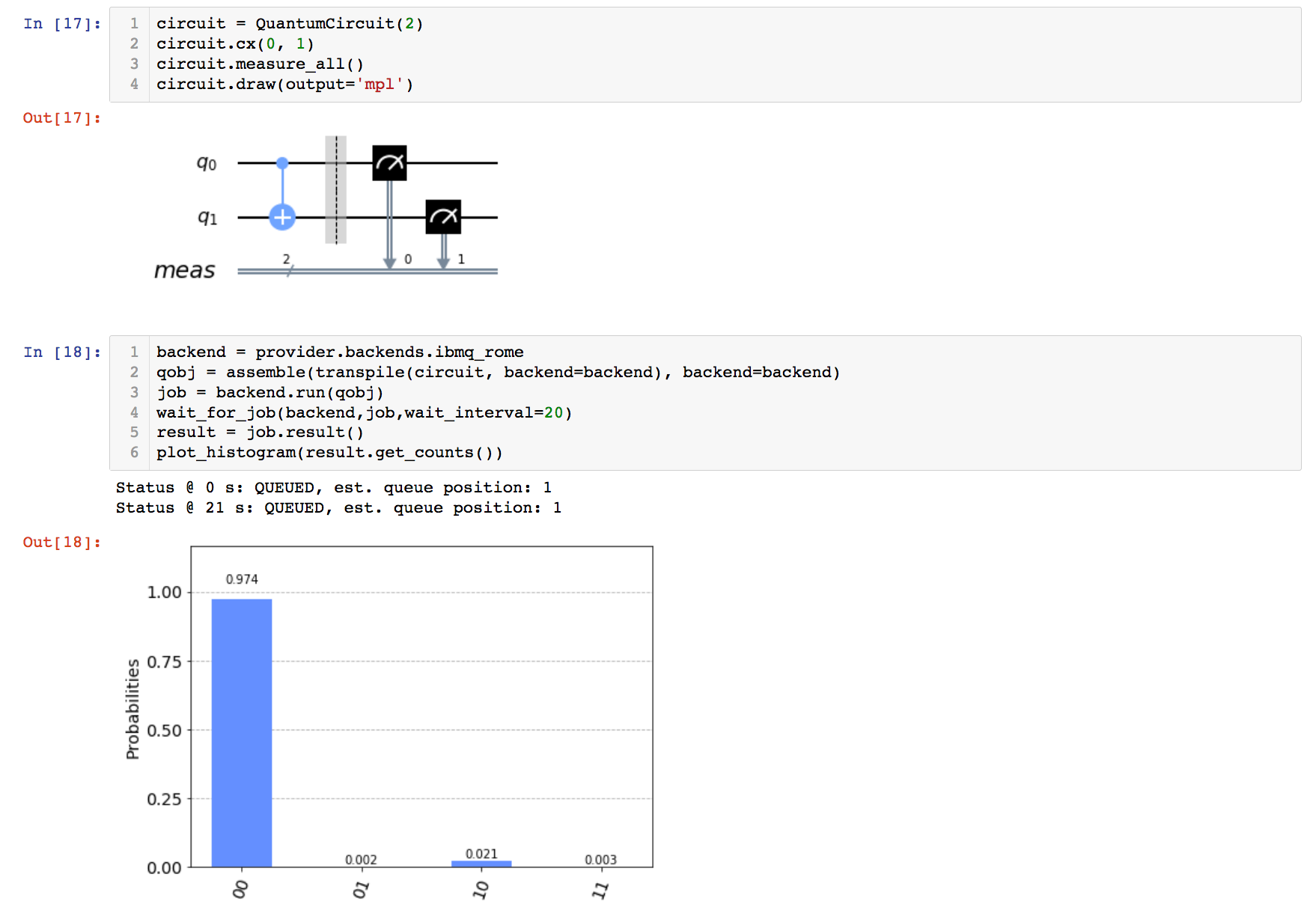
For qubits in the states ∣0❭ or ∣1❭, the Pauli X operator swaps their state. This is like a classical NOT gate in digital logic design. See the sidebar for the classical TTL 7404 quad inverter, and refer to the equally classic as the state Don Lancaster's TTL Cookbook for all you would like to know about classic digital logic with the 7400-series TTL logic gates.
However, for other states, the Pauli X operator does not invert. This operator leaves the ∣+❭ unchanged. The ∣−❭ is also unchanged except for the sign of its weight becomes -1. Since that weight is used by the Born law as a square, this change of sign does not observably change the state, hence the state ∣−❭ is also unchanged.
X ∘ ∣0❭ = ∣1❭
X ∘ ∣1❭ = ∣0❭
X ∘ ∣+❭ = ∣+❭
X ∘ ∣−❭
= (−1) ∣−❭
≅ ∣−❭
The last two equalities are consequences of the first two equalities.
X ∘ ∣+❭ = X ∘ (1/√2)( ∣0❭ + ∣1❭ ) = (1/√2)( X ∘ ∣0❭ + X ∘ ∣1❭ ) = (1/√2)( ∣1❭ + ∣0❭ ) = ∣+❭
X ∘ ∣−❭ = X ∘ (1/√2)( ∣0❭ − ∣1❭ ) = (1/√2)( X ∘ ∣0❭ − X ∘ ∣1❭ ) = (1/√2)( ∣1❭ − ∣0❭ ) = − ∣+❭
The experiment has q0 inverted from ∣0❭ to ∣1❭. If an X was applied to q1 so it entered the CNOT as ∣1❭ it would be inverted by the CNOT to ∣0❭. We did not show this case for q1 as the formation of the Bell state will have q1= ∣0❭.
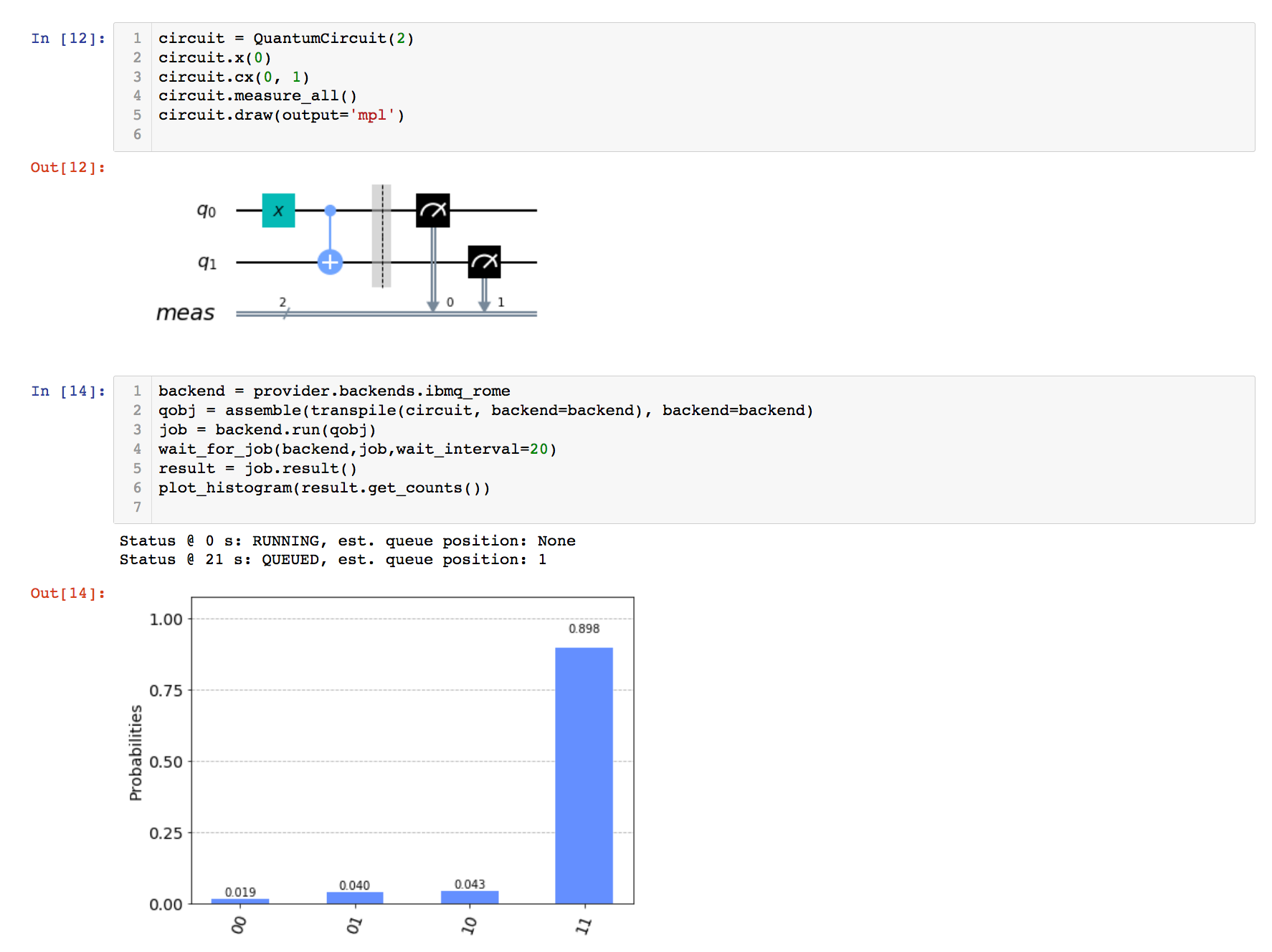
(1/√2) ( ∣00❭ + ∣01❭ ) = ∣0❭ ⊗ (1/√2) ( ∣00❭ + ∣01❭ ) = ∣0❭ ⊗ H ∘ ∣0❭
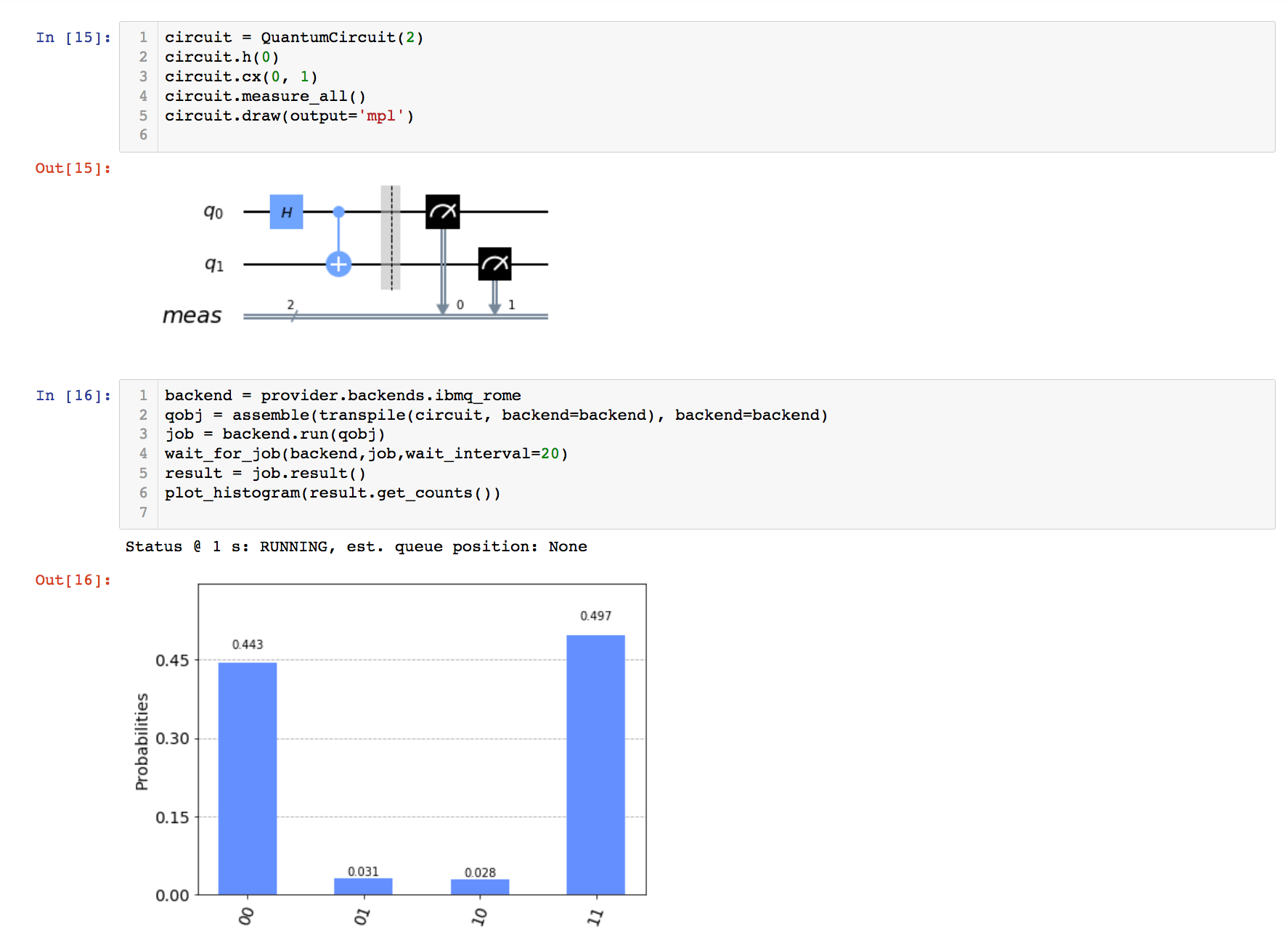

author: burton rosenberg
created: 1 may 2020
update: 26 may 2020